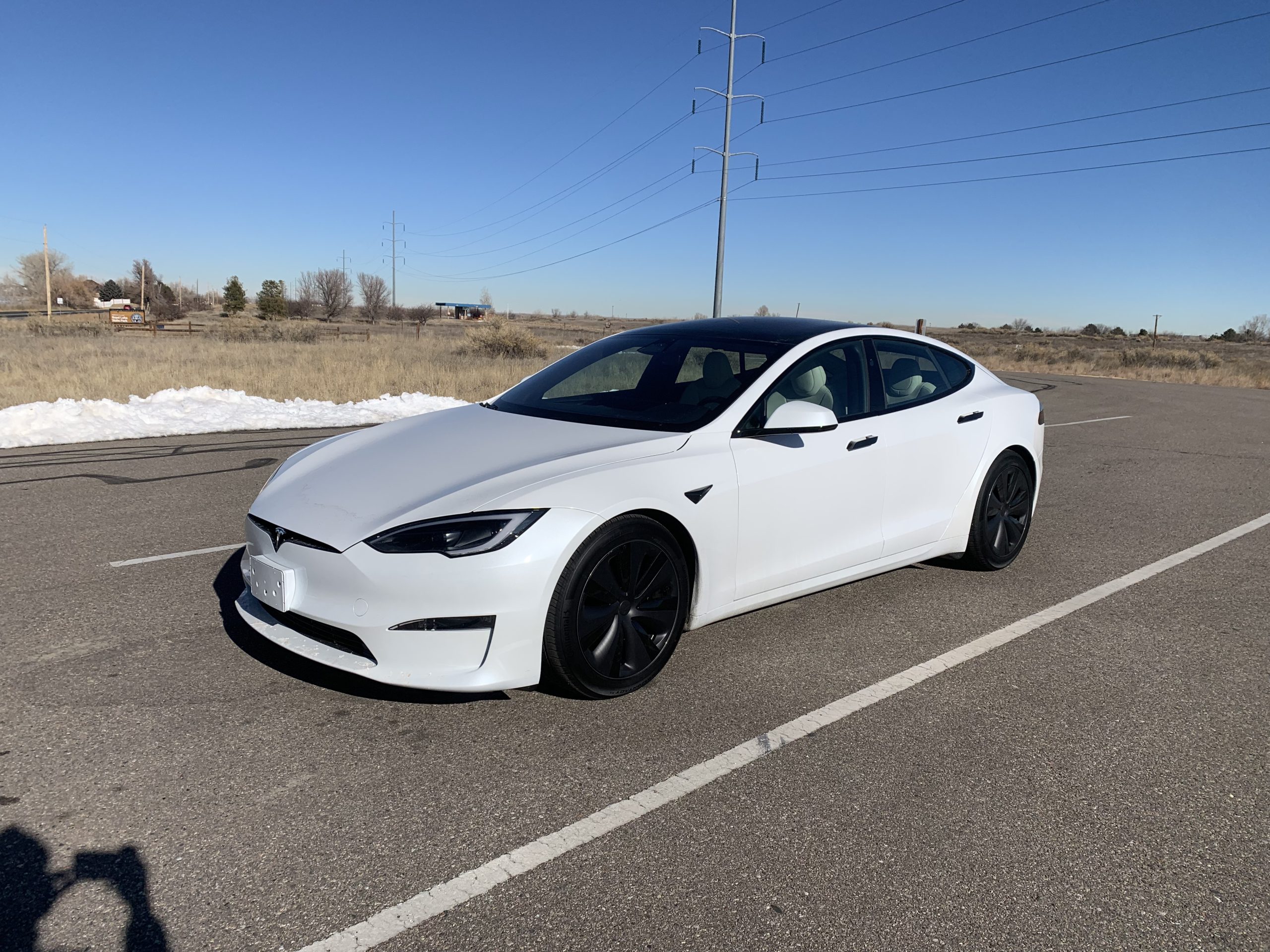
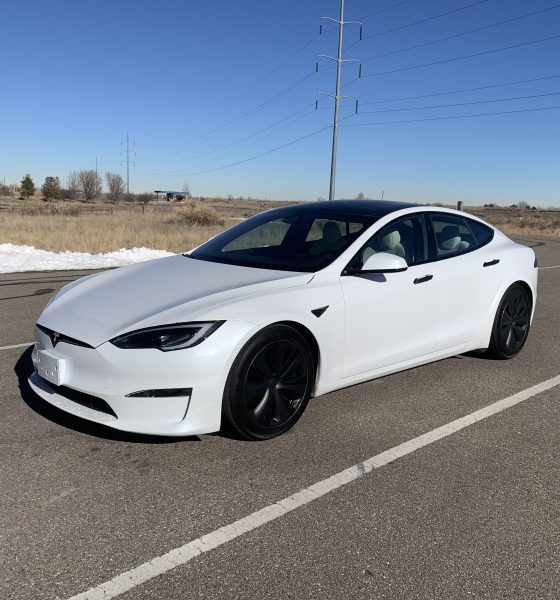
News
I tried Tesla’s FSD Supervised on a demo drive—Here’s what I learned
Tesla’s Supervised Full Self-Driving (FSD) has been at the center of the company’s long-term strategy for years, and seeing as I’ve been covering the company and its competitors since 2020, I decided it was finally time to try it out myself.
The process of scheduling a demo drive was simple: I scheduled it online through Tesla’s test drive page, and because I was hoping to focus on FSD, I shot an email over to the Loveland team letting them know that I was coming and was planning to try the software out. I got a quick response, in which one of the advisors offered to schedule me for an extended demo drive, effectively giving me a three-hour window to try out FSD Supervised.
On Monday, I headed out from my house in Fort Collins, Colorado, to the next town over, Loveland, to try Tesla’s latest FSD Supervised version available. While I initially scheduled a demo drive for a Model Y with FSD Supervised v13.2.2, one of the Tesla advisors informed me that there was also a Model S on-site with version v13.2.2.1, so I elected to test that one instead.
After getting a quick rundown from the advisor on the Model S, my demo drive officially began. I typed my first destination into the navigation system, pressed and held the blue “Start FSD (Supervised)” button, and off I went.
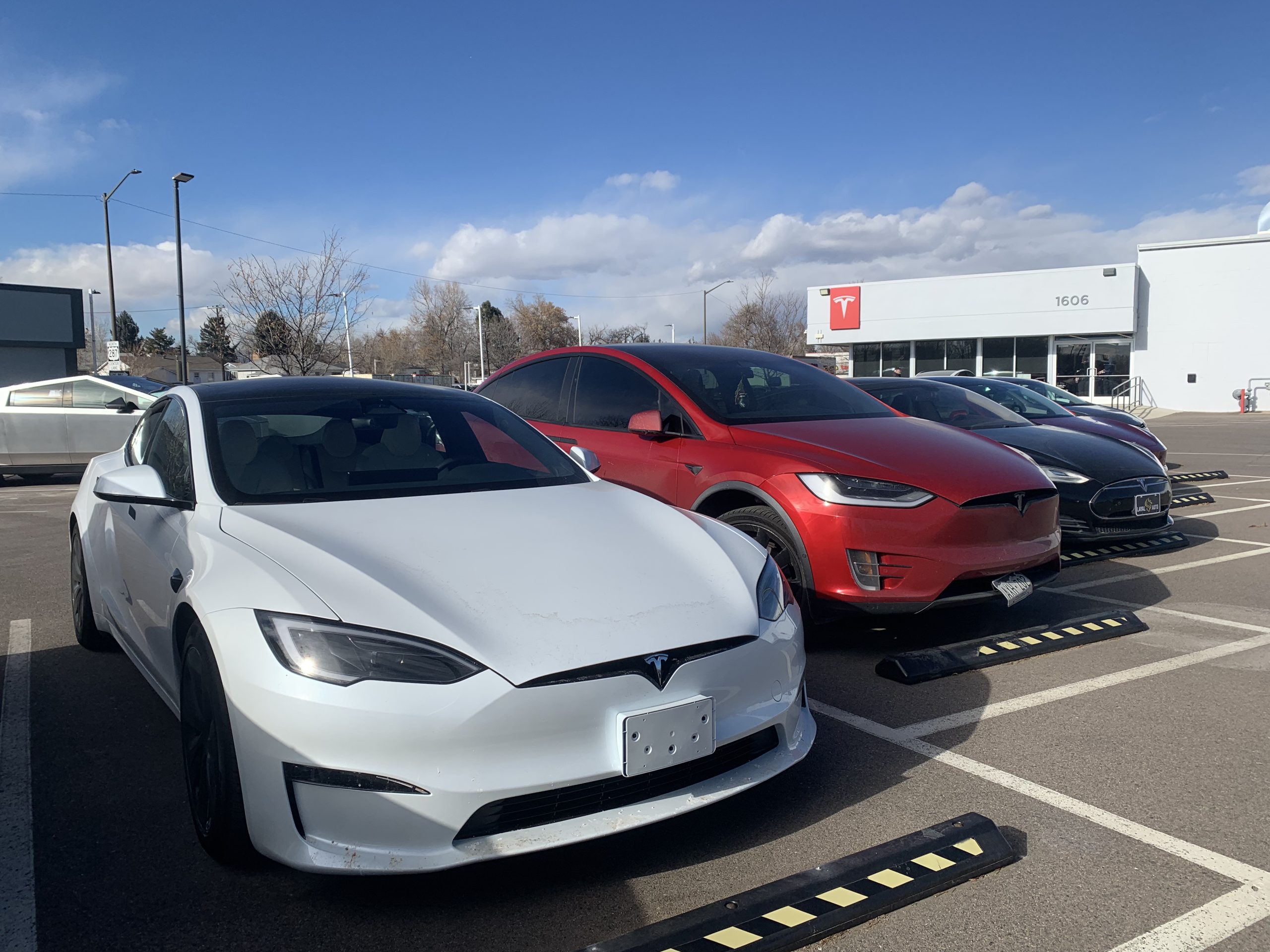
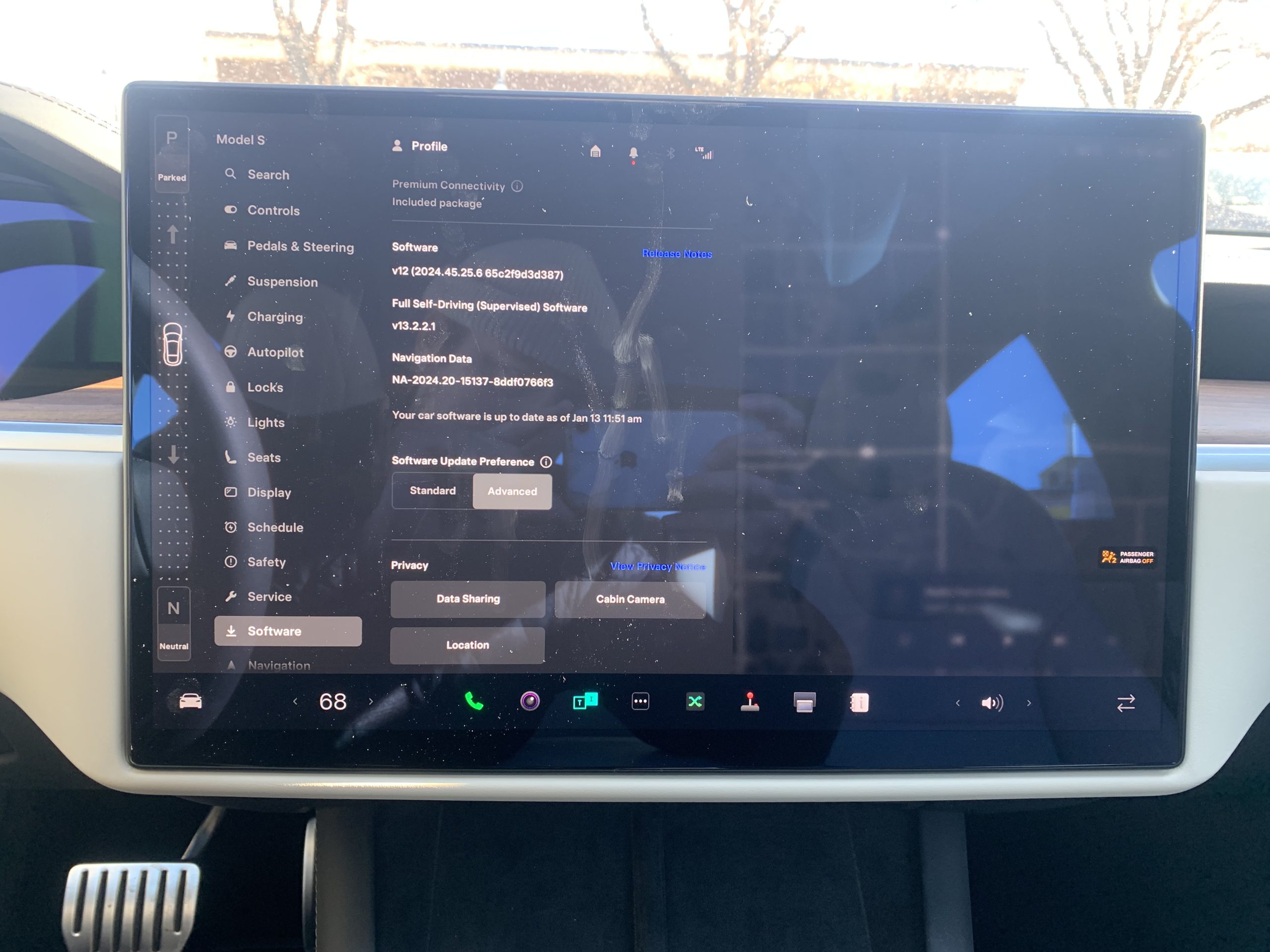
Tesla’s FSD Supervised: autonomy is definitely on the way
Perhaps many people have this experience when trying FSD out for the first time, but right off the bat, I found myself laughing at how it worked and a little scared that it would make a mistake. This Model S was now driving me out of the Loveland Tesla parking lot to a nearby Target, through busy parking lots, turns and lane changes, and it was pretty uncomfortable at first not to be the one making the maneuvers—let alone the fact that no person was making these maneuvers, but rather it was the vehicle doing it on its own.
I felt like an anxious passenger—my feet pressed firmly on the floor in distrust and disbelief—only I was sitting in the driver’s seat. I really couldn’t do much but laugh at how strange the experience had felt so far.
Then, not long after my first trip, something interesting happened.
My mindset slowly shifted from fear to trust with each correct maneuver, and I managed my first few drives without disengaging at all, offering a true testament to how well FSD Supervised performed on this test. Granted, I went in without too much of a plan and wasn’t targeting fringe cases or particularly tough maneuvers; I just wanted to see if this car could drive me around for a few hours, and to feel what it was like to demo FSD Supervised as a newcomer.
It’s worth noting that I did most of my driving in FSD’s Chill mode, though I also tested a few drives in both Standard and Hurry. Personally, I think I would probably keep it in Chill mode most of the time, as it’s the most similar to how I drive of the three.
Below are a few moments from the drive that show some of the system’s capabilities, even turning onto busy roads that would be difficult for a human driver.
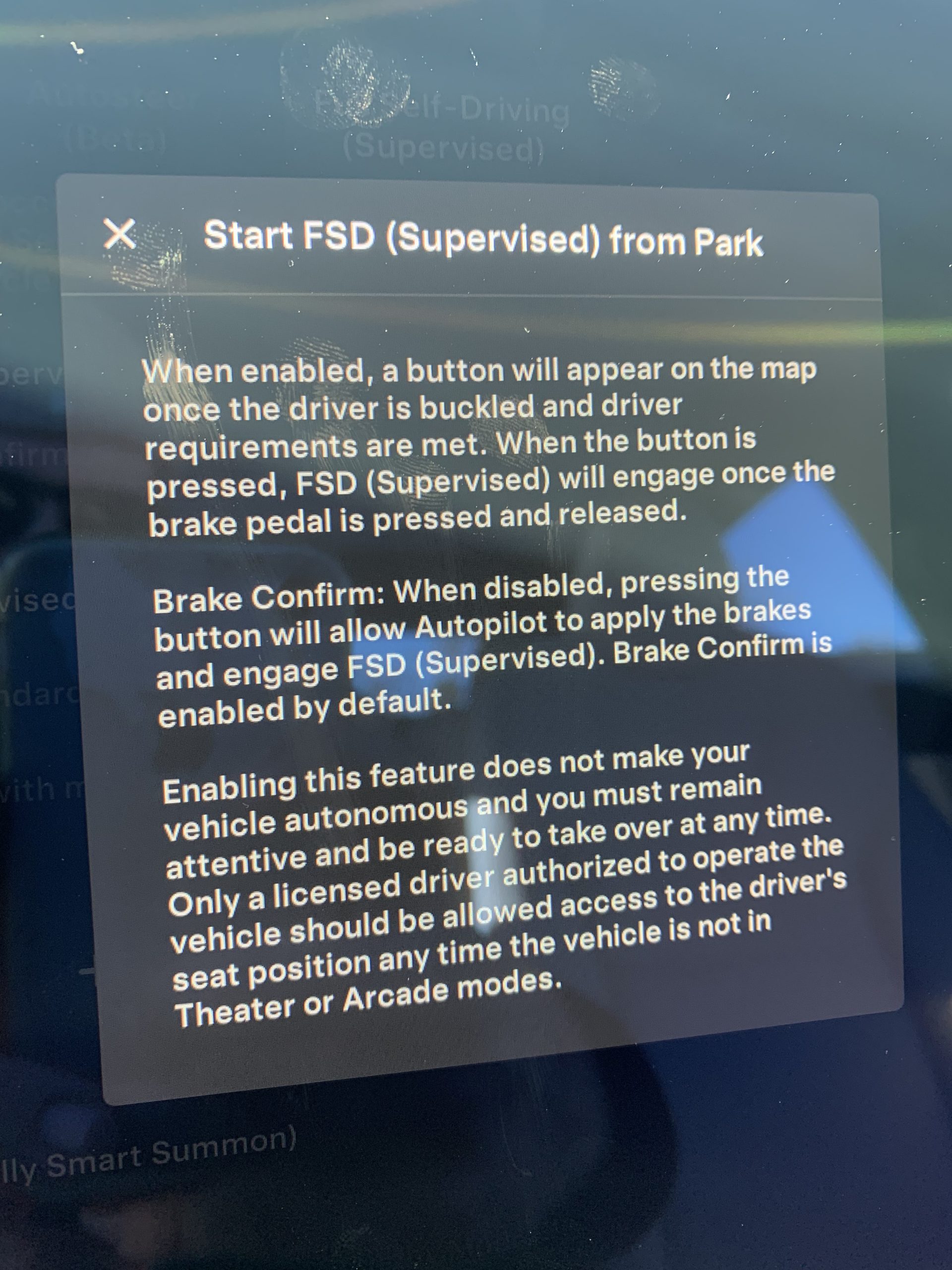
Tesla’s FSD Supervised reverses out of a parking spot… and we’re off
A simple reverse out of a parking spot, a good start! pic.twitter.com/TIx2yDmSxT
— TESLARATI (@Teslarati) January 15, 2025
Tesla’s FSD Supervised takes a few left turns onto busy roads
Another busy left turn – “FSD handled this busy turn with ease.” pic.twitter.com/SncR0Kh7ar
— TESLARATI (@Teslarati) January 15, 2025
Another left turn during a somewhat busy time of day – “I was a little scared, not going to lie, but FSD handled it well.” pic.twitter.com/WNunR05C3h
— TESLARATI (@Teslarati) January 15, 2025
Tesla’s FSD Supervised tackles a two-lane roundabout and parking lot
Roundabout? No problem! – “A two-lane roundabout that FSD handled pretty comfortably.” pic.twitter.com/X9QJIVXb6z
— TESLARATI (@Teslarati) January 15, 2025
Left-hand turn out of a parking lot – “It was pretty busy in there but it was well handled, the car navigated easily through the intersection just as I would have.” pic.twitter.com/Kzxb0aYtFN
— TESLARATI (@Teslarati) January 15, 2025
READ MORE ON TESLA’S FSD SUPERVISED: Tesla Cybertruck receives FSD (Supervised) v13.2.4 update
The temptation not to pay attention, and my most critical disengagement
Elon Musk and others have talked up FSD Supervised v13 since its release, as well as claiming that unsupervised driving is just around the corner. While it does feel closer than ever after years of reporting on small tweaks, improvements and developments, I think it’s also worth emphasizing again that the system still requires the driver to pay attention, even though it’s tempting to believe that it can handle all the driving by itself.
As I drove more and more, or rather as the car drove me, I became more comfortable trusting that FSD Supervised was going to make the right decisions, which it did about 99 percent of the time. I was lulled into somewhat of a false sense of safety that almost had me believing the vehicle didn’t need to be supervised, but that 1 percent of the time (maybe even less) that it did get confused still required my input.
I only had a few interventions for the whole experience, but one in particular had me a little scared after having become a little complacent and too trusting. As you can see in the video below, FSD Supervised was looking to merge into the right lane, when two vehicles slowed down. The Model S attempted to change lanes anyway, requiring me to overtake the wheel and keep driving straight.
Our first bit of adversity – “This was the most dangerous intervention I faced (I only had about three the whole time). FSD was trying to merge right, but the vehicles in that lane slowed down, and the car didn’t seem to understand what was going on. It started merging into the… pic.twitter.com/hJUBnCAjd2
— TESLARATI (@Teslarati) January 15, 2025
Besides the quick moment of fear in deciding I needed to take the wheel, it really was not a big deal once I regained control. It was actually a good wake-up call: this system still needs to be supervised, even if it makes fewer and fewer mistakes with each new version and feels like a solid human driver for the vast majority of the time.
I had a few other disengagements on my drive, mostly when the vehicle seemed to get confused about uncommon traffic circumstances or in confusing parking lot scenarios without clear signage. However, these moments made up a very small portion of my experience, and I can only imagine what another couple of years of development will do.
Tesla’s FSD Supervised: still needs supervision, but I got a good glimpse into a future of autonomy
All in all, I really enjoyed trying out FSD Supervised and I hope to do it again sometime. Additionally, I’d recommend trying it out to anyone, especially if you’re interested in seeing where driving tech is headed.
While I definitely got a glimpse into the future potential for fully autonomous driving, I also think it still requires supervision, even if just for those very seldom moments where the system gets confused. The margin for error with driving safety is obviously extremely low, though I do believe Tesla will eventually make good on its aim to make this system better than human drivers in time—and it already feels pretty close the majority of the time.
I hope to do this again sometime soon, and a major shout out to the Tesla Loveland team for making the experience smooth and for answering all my questions along the way.
What are your thoughts? Let me know at zach@teslarati.com, find me on X at @zacharyvisconti, or send us tips at tips@teslarati.com.
Tesla employees are performing autonomous FSD trials, CEO Elon Musk says
Need accessories for your Tesla? Check out the Teslarati Marketplace:

News
Tesla aims to combat common Full Self-Driving problem with new patent
Tesla writes in the patent that its autonomous and semi-autonomous vehicles are heavily reliant on camera systems to navigate and interact with their environment.

Tesla is aiming to combat a common Full Self-Driving problem with a new patent.
One issue with Tesla’s vision-based approach is that sunlight glare can become a troublesome element of everyday travel. Full Self-Driving is certainly an amazing technology, but there are still things Tesla is aiming to figure out with its development.
Unfortunately, it is extremely difficult to get around this issue, and even humans need ways to combat it when they’re driving, as we commonly use sunglasses or sun visors to give us better visibility.
Cameras obviously do not have these ways to fight sunglare, but a new patent Tesla recently had published aims to fight this through a “glare shield.”
Tesla writes in the patent that its autonomous and semi-autonomous vehicles are heavily reliant on camera systems to navigate and interact with their environment.

The ability to see surroundings is crucial for accurate performance, and glare is one element of interference that has yet to be confronted.
Tesla described the patent, which will utilize “a textured surface composed of an array of micro-cones, or cone-shaped formations, which serve to scatter incident light in various directions, thereby reducing glare and improving camera vision.”

The patent was first spotted by Not a Tesla App.
The design of the micro-cones is the first element of the puzzle to fight the excess glare. The patent says they are “optimized in size, angle, and orientation to minimize Total Hemispherical Reflectance (THR) and reflection penalty, enhancing the camera’s ability to accurately interpret visual data.”
Additionally, there is an electromechanical system for dynamic orientation adjustment, which will allow the micro-cones to move based on the angle of external light sources.
This is not the only thing Tesla is mulling to resolve issues with sunlight glare, as it has also worked on two other ways to combat the problem. One thing the company has discussed is a direct photon count.
CEO Elon Musk said during the Q2 Earnings Call:
“We use an approach which is direct photon count. When you see a processed image, so the image that goes from the sort of photon counter — the silicon photon counter — that then goes through a digital signal processor or image signal processor, that’s normally what happens. And then the image that you see looks all washed out, because if you point the camera at the sun, the post-processing of the photon counting washes things out.”
Future Hardware iterations, like Hardware 5 and Hardware 6, could also integrate better solutions for the sunglare issue, such as neutral density filters or heated lenses, aiming to solve glare more effectively.
Elon Musk
Delaware Supreme Court reinstates Elon Musk’s 2018 Tesla CEO pay package
The unanimous decision criticized the prior total rescission as “improper and inequitable,” arguing that it left Musk uncompensated for six years of transformative leadership at Tesla.

The Delaware Supreme Court has overturned a lower court ruling, reinstating Elon Musk’s 2018 compensation package originally valued at $56 billion but now worth approximately $139 billion due to Tesla’s soaring stock price.
The unanimous decision criticized the prior total rescission as “improper and inequitable,” arguing that it left Musk uncompensated for six years of transformative leadership at Tesla. Musk quickly celebrated the outcome on X, stating that he felt “vindicated.” He also shared his gratitude to TSLA shareholders.
Delaware Supreme Court makes a decision
In a 49-page ruling Friday, the Delaware Supreme Court reversed Chancellor Kathaleen McCormick’s 2024 decision that voided the 2018 package over alleged board conflicts and inadequate shareholder disclosures. The high court acknowledged varying views on liability but agreed rescission was excessive, stating it “leaves Musk uncompensated for his time and efforts over a period of six years.”
The 2018 plan granted Musk options on about 304 million shares upon hitting aggressive milestones, all of which were achieved ahead of time. Shareholders overwhelmingly approved it initially in 2018 and ratified it once again in 2024 after the Delaware lower court struck it down. The case against Musk’s 2018 pay package was filed by plaintiff Richard Tornetta, who held just nine shares when the compensation plan was approved.
A hard-fought victory
As noted in a Reuters report, Tesla’s win avoids a potential $26 billion earnings hit from replacing the award at current prices. Tesla, now Texas-incorporated, had hedged with interim plans, including a November 2025 shareholder-approved package potentially worth $878 billion tied to Robotaxi and Optimus goals and other extremely aggressive operational milestones.
The saga surrounding Elon Musk’s 2018 pay package ultimately damaged Delaware’s corporate appeal, prompting a number of high-profile firms, such as Dropbox, Roblox, Trade Desk, and Coinbase, to follow Tesla’s exodus out of the state. What added more fuel to the issue was the fact that Tornetta’s legal team, following the lower court’s 2024 decision, demanded a fee request of more than $5.1 billion worth of TSLA stock, which was equal to an hourly rate of over $200,000.
Delaware Supreme Court Elon Musk 2018 Pay Package by Simon Alvarez
News
Tesla Cybercab tests are going on overdrive with production-ready units
Tesla is ramping its real-world tests of the Cybercab, with multiple sightings of the vehicle being reported across social media this week.

Tesla is ramping its real-world tests of the Cybercab, with multiple sightings of the autonomous two-seater being reported across social media this week. Based on videos of the vehicle that have been shared online, it appears that Cybercab tests are underway across multiple states.
Recent Cybercab sightings
Reports of Cybercab tests have ramped this week, with a vehicle that looked like a production-ready prototype being spotted at Apple’s Visitor Center in California. The vehicle in this sighting was interesting as it was equipped with a steering wheel. The vehicle also featured some changes to the design of its brake lights.
The Cybercab was also filmed testing at the Fremont factory’s test track, which also seemed to involve a vehicle that looked production-ready. This also seemed to be the case for a Cybercab that was spotted in Austin, Texas, which happened to be undergoing real-world tests. Overall, these sightings suggest that Cybercab testing is fully underway, and the vehicle is really moving towards production.
Production design all but finalized?
Recently, a near-production-ready Cybercab was showcased at Tesla’s Santana Row showroom in San Jose. The vehicle was equipped with frameless windows, dual windshield wipers, powered butterfly door struts, an extended front splitter, an updated lightbar, new wheel covers, and a license plate bracket. Interior updates include redesigned dash/door panels, refined seats with center cupholders, updated carpet, and what appeared to be improved legroom.
There seems to be a pretty good chance that the Cybercab’s design has been all but finalized, at least considering Elon Musk’s comments at the 2025 Annual Shareholder Meeting. During the event, Musk confirmed that the vehicle will enter production around April 2026, and its production targets will be quite ambitious.








